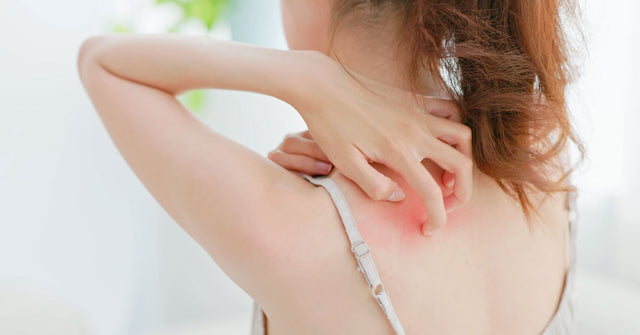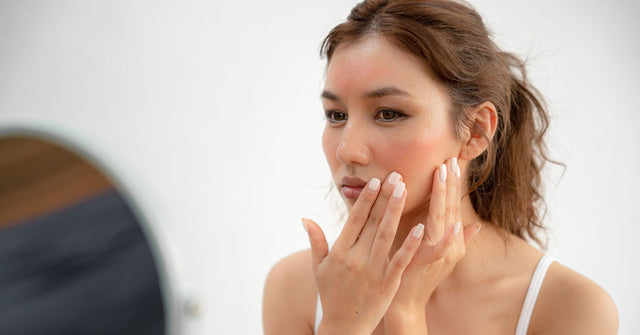The secret to achieving radiant, youthful skin lies in proper exfoliation. However, people often neglect it, as they generally focus mostly on cleansing and toning. Using a face exfoliator can be a valuable addition to your skincare routine, but you have to know which products to use. This article will focus on the importance of including exfoliation in your beauty regimen.
What Is Exfoliation?
Exfoliation is a skincare process that involves removing dead skin cells from the surface of the skin. Your skin naturally sloughs off dead skin cells daily. However, those skin cells don’t always fall off as they’re supposed to do. Instead, they tend to build up and cause a dull appearance. The build-up of dead skin cells, dirt, and other impurities may impair the effectiveness of the skincare products you use.
Why You Should Exfoliate Your Face?
There are a couple of reasons why you should consider using a face exfoliator as part of your skincare routine. It is important to keep in mind that dead skin cells collect on the surface of your skin and could clog your pores.
Your cleanser is effective in removing dirt from your face, but can’t get rid of all those dead cells. An exfoliator removes dead skin cells and helps reveal a younger-looking layer of skin. It also helps to make other skin care products more effective, as your skin’s ability to absorb active ingredients will improve.
Benefits of Face Exfoliation
-
It unclogs pores: By removing dead skin cells, exfoliation allows the release of natural skin oils that give you a beautiful complexion.
-
Prevents acne: By removing dirt and dead skin cells from your pores, a face exfoliator is very effective in removing bacteria and reducing your risk of acne breakouts.
-
Boosts circulation and lymphatic drainage: When you massage a face exfoliator onto your skin, it can also help to stimulate your blood circulation - which ensures more blood can reach the surface of your skin. Additionally, you’ll also improve lymphatic drainage, which can also hold long-term benefits in improving your skin’s appearance and reducing acne.
-
Makes fine lines and wrinkles look less visible: After exfoliation, the newly exposed skin layer reflects light more efficiently and minimizes the appearance of signs of aging.
-
Improved skin texture and tone: When you regularly use an exfoliating scrub for face, you’ll have a more even skin tone and your skin’s texture also improves.
What’s the Difference between Chemical Exfoliation and Physical Exfoliation?
When it comes to asking a question like “What does exfoliating do?”, it’s important to understand that there are two types of exfoliation. These include chemical and physical exfoliation. Physical is sometimes also referred to as mechanical exfoliation.
The main difference between each exfoliator for face is in how they remove dead skin cells. Chemical exfoliation uses certain chemical ingredients or natural compounds to remove dead cells from your skin. With physical exfoliation, a special device or tool is generally used to buff the outer layer of your skin.
You’ll generally find that chemical exfoliation is the gentler option here. That’s because physical exfoliation can be harsh on the skin. Physical exfoliation is not considered an ideal answer to “How to get rid of dead skin on face?” due to sensitivity issues.
How to Exfoliate Your Face?
Understanding how to remove dead skin from face through exfoliation is important. In addition to knowing how frequently you should use these exfoliators, it’s also essential that you be cognizant of how the entire process works.
We’re going to share a step-by-step process that you can use to get rid of these dead skin cells.
-
Start with a clean face: When you use a cleanser, it helps remove dirt and other particles that have collected on your skin. It creates a clean canvas to use your exfoliator on. The Dermpura Skin Balancing Cleanser is a good choice, but if you want an option that goes deeper, then consider the Rejuvoderm Clarifying Cleanser.
-
Identify your skin type: Many people don’t know their skin type, which can make it difficult to buy the right products. Find out if you have dry, oily, normal, combination, or sensitive skin. Choose products that are a good match for your skin type. Using the right face exfoliator helps prevent complications.
-
Choose the right exfoliant: Picking a good face exfoliator plays an incredibly important part in how effective your exfoliation process will be. Apart from your skin type, also consider your expectations and needs. Avoid harsh ingredients and if there are any type of beads in the exfoliator, make sure they won’t irritate your skin.
-
Apply the exfoliant: You should read the instructions on the container before applying the exfoliant to your face. You will generally only use a small amount of the formula and then gently massage it onto your skin. Make sure you’re not too vigorous, as this could cause damage and irritation to your skin.
-
Avoid sensitive areas: If you’ve got sensitive skin, it makes caring for your skin difficult. When you apply the face exfoliator, be careful and avoid the specific sensitive areas of your skin.
-
Massage gently: Don’t put too much pressure on your face when you apply the exfoliator. Gently massage your skin as this can help contribute to the overall efficacy of the exfoliator while also improving blood circulation.
-
Pat dry: After you follow the instructions for the exfoliator, you should rinse the solution off your face with water. Use a clean towel to pat your face dry. Don’t rub the towel over your face as this can trigger sensitivity problems.
-
Apply a moisturizer to hydrate: Once your face is dry, it’s time to apply a good moisturizer to your skin. The moisturizer will help hydrate and moisturize your face. Consider using Infusoderm Deep Hydration Daily Moisturizer, which is great for hydrating your skin and leaving it feeling smooth to the touch.
-
Apply serum: Ideally, you also want to use a serum on your skin. The type of serum you use depends on your needs.
-
Apply a broad-spectrum sunscreen: The final step to a good skincare routine is to use sunscreen. This is one of the most vital steps that you can take, as consistent exposure to the UV radiation of the sun can be damaging to your skin. A broad-spectrum sunscreen will help protect your skin against different types of UV rays.
FAQs
Does exfoliation remove tan?
While it does depend on the type of exfoliation you use, exfoliating your skin will usually cause your tan to start fading away. However, it’s usually going to take multiple sessions of exfoliation before it removes your tan.
Does exfoliation lighten skin?
Exfoliation can lighten your skin, but it also comes down to the specific products you use to exfoliate your skin.
Is it OK to exfoliate your face daily?
Cleanser removes surface-level dirt, makeup, and other impurities. Exfoliation removes dead skin cells that are deeper. It also removes impurities that cleansers can’t. However, it’s a bit harsher on your skin than a cleanser, so it’s not recommended to do it every single day.
Is exfoliation safe?
Exfoliation is a safe and gentle treatment that doesn’t cause side effects or complications. However, you still need to consider your skin type and use products that won’t be harsh on your skin.
How often should I exfoliate?
You shouldn’t exfoliate every day. The ideal frequency depends on a couple of factors, such as the products you use and your skin type. Once or twice a week is generally enough for most people.
Conclusion
Exfoliation is important for your skin, as it removes dirt, debris, and dead skin cells that your cleanser misses. However, it’s important to understand that exfoliating frequently can be bad for your skin, especially when you have sensitive skin. Exfoliating with the right product and the ideal frequency can do a lot to help you improve the appearance of your skin.
References
1] https://www.ncbi.nlm.nih.gov/pmc/articles/PMC4720453/
2] https://www.kiehls.com/skincare-advice/chemical-vs-physical-exfoliation.html
3] https://www.ncbi.nlm.nih.gov/pmc/articles/PMC5849435/
Mentioned in this article
More stories

What is Itchy Sunburn and How Can You Find Relief?






